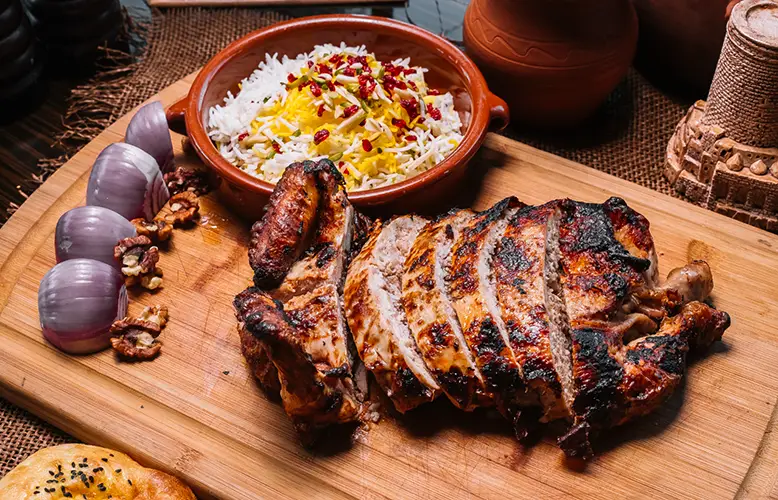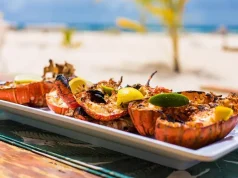Asado, or “Argentine BBQ,” is a beloved term for a cultural way of life that goes far beyond sincerely cooking meat. It is an imperative factor of Argentine identity. This is more than simply grilling; it’s miles of a whole culinary revel that gathers buddies, family, or even complete communities around a fireplace. As a whole lot about sharing and getting together as it is about enjoying the deep flavors of Argentine BBQ recipes, asado is ready for that.

Using a parrilla or grill to cook dinner with different cuts of meat over natural wood or charcoal until they are flawlessly cooked is crucial to the Asado experience. The meat continues its juiciness and develops the signature smoky taste of Argentine BBQ thanks to this slow-cooking approach, which is carefully overseen by the asador (grill master). Although a whole lot of meats are grilled, pork continually takes center level, honoring Argentina’s long-standing tradition of livestock rearing. The selection is giant and engaging, ranging from tenderloin and chorizo sausages to succulent ribs.
It is not possible to exaggerate the cultural importance of asado in Argentina. It is a custom that celebrates critical life events and holidays and creates an experience of networking and belonging. At Asado get-togethers, people can spend nice time with their loved ones while dining on delicious meals in a laid-back setting. Generation after generation has carried on this custom, with every asador taking exceptional pride in their very own method of coping with the grill.
History and Evolution of Argentine BBQ
The roots of Argentine BBQ, or Asado, trace once more to the indigenous people of Argentina and the gauchos (cowboys) of the Pampas. These tremendous grasslands are ideal for farm animal ranching. Initially, these gatherings had been a way for gauchos to proportion their entice after an afternoon’s paintings, cooking their meals over an open hearth. As cattle ranching flourished in the nineteenth century, so did the way of life of Asado, evolving right into a culinary practice that symbolizes the Argentine way of life.
Over time, Asado became more than simply a way of cooking; it transformed into an art form, with diverse areas of Argentina contributing their very own flavors and techniques. Today, it is a staple of Argentine life, celebrated not only in the countryside but also in urban areas, from outdoor patios to state-of-the-art Asado restaurants. The evolution of Asado reflects the history and diversity of Argentina itself, incorporating indigenous, Spanish, and Italian impacts into its exercise.

Essential Features of Argentine Asado
- The Grill (Parrilla): The parrilla is crucial to the Argentine Asado. It isn’t just any grill, but a specific structure designed for cooking meat over wood or charcoal. The parrilla permits precise temperature control, with the asador adjusting the height of the grill to ensure every cut of meat is cooked to perfection. This technique imparts a distinct smoky flavor to the beef, which is the function of Asado.
- The Ritual: Asado is a ritualistic practice in which the process of preparing and cooking the meat is as crucial as the meal itself. The asador, or grill grasp, takes a middle degree, meticulously handling the fireplace, deciding on the cuts of meat, and determining their placement on the grill. This ritual begins early in the day and unfolds slowly, with the asador often being a figure of admiration among guests.
- The Social Aspect: Perhaps the most defining detail of Asado is its social nature. These gatherings are an opportunity for friends and their circle of relatives to come together, share stories, and experience everyone’s company in a relaxed and convivial ecosystem. The Asado can last several hours, with the act of eating taking a back seat to the social interaction that it fosters. It’s a time when relationships are bolstered, and new ones are formed, embodying the Argentine values of hospitality and community.
Setting the Stage: Preparing for an Authentic Argentine BBQ Experience
Understanding and assembling the necessary equipment and ingredients is crucial to hosting a traditional Argentine BBQ, or asado. This preparation, which pays homage to Argentina’s extensive grilling customs, sets the stage for an authentic culinary adventure.
Essential Tools
- Parrilla (Grill): The heart of Argentine BBQ. Unlike typical American grills, a parrilla features a grate that can be adjusted in height over the coals to control cooking temperature. For those without access to a traditional parrilla, a charcoal grill with adjustable racks can suffice.
- Grill Pan or Plancha: For cooking vegetables or smaller items that might fall through the grill grates.
- Chimney Starter: An efficient way to start your charcoal without the need for lighter fluid, ensuring the purest flavor of your grilled foods.
- Long-Handled Tongs and Spatula: Necessary for managing the meat on the grill without getting too close to the heat.
- Carving Knife and Fork: A sharp knife is essential for slicing grilled meats, and a sturdy fork will help in carving and serving.
- Firewood or Charcoal: Hardwood charcoal is preferred for its ability to burn hotter and longer, imparting a subtle smoky flavor to the meat.
Essential Ingredients
- Quality meats are the centerpiece of any Asado. Short ribs, flank steak, ribeye, and sausages like chorizo and morcilla (blood sausage) are examples of common cuts. Pork and chicken may also be included.
- Sea Salt: The main spice for the meats is coarse or flaky sea salt, which brings out the flavors of the meats without overpowering them.
- Chimichurri: A classic Argentine marinade or condiment made with vinegar, oil, parsley, and chili flakes.
- Sides of vegetables: To grill with the meats. Common choices include bell peppers, onions, tomatoes, and eggplants.
- Wine: Malbec is the preferred wine to pair with Argentine barbecue because of its reputation for enhancing the flavorful grilled meats.

Preparing Your Grill the Argentine Way
- Lighting the Fire: Start your fire using the chimney starter filled with charcoal or wood. Argentine Asados traditionally use wood, which imparts a distinct flavor to the meat. However, charcoal is an acceptable substitute that can still produce delicious results.
- Arranging the Coals: Once the charcoal or wood has burned down to embers, distribute them evenly under the grill grate. For a traditional parrilla, the ability to adjust the height of the grate over the coals allows for precise temperature control.
- Regulating the Heat: Argentine BBQ is not about rushing. The meat should be simmered, turned infrequently, and never pressed down upon, allowing it to develop a perfect crust while maintaining its juicy interior. Use areas of indirect heat for slower cooking cuts and direct heat for searing.
- Resting the Meat: Once cooked, let the meat rest on a cutting board for a few minutes before slicing. This step allows the juices to redistribute throughout the meat, ensuring that every bite is succulent and flavorful.
Setting the stage for an Argentine Asado with the right tools, ingredients, and preparation techniques is crucial for capturing the essence of this beloved culinary tradition. It’s a celebration of simple, high-quality ingredients coming together under the skilled hand of the asador, creating a communal dining experience that’s at the heart of Argentine culture.
Essentially, Argentine barbecue symbolizes the social fabric of the nation, placing a strong emphasis on friendliness, warmth, and a shared passion for good food. Its distinctiveness is found not only in the flavors or the grilling methods but also in the way it fosters community and enduring memories centered around the straightforward but meaningful act of dining together.





